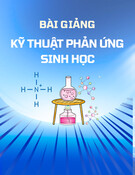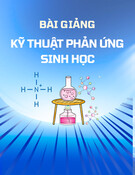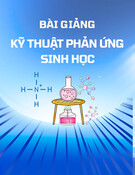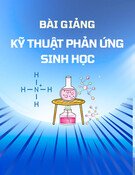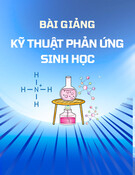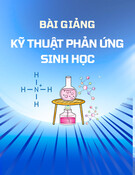
Nguyen Thi Le Anh / Tạp chí Khoa học và Công nghệ Đại học Duy Tân 04(65) (2024) 72-79
72
A theory of molecular organic photochemistry
Lý thuyết về sự quang hóa của các phân tử hữu cơ
Nguyen Thi Le Anha,b*
Nguyễn Thị Lê Anha,b*
aInstitute of Research and Development, Duy Tan University, Da Nang, 550000, Vietnam
aViện Nghiên cứu và Phát triển Công nghệ Cao, Trường Ðại học Duy Tân, Ðà Nẵng, Việt Nam
bFaculty of Environment and Natural Science, School of Engineering and Technology, Duy Tan University, Da Nang,
550000, Vietnam
bKhoa Môi trường và Khoa học tự nhiên, Trường Công nghệ, Trường Đại học Duy Tân, Đà Nẵng, Việt Nam
(Date of receiving article: 15/03/2024, date of completion of review: 27/03/2024, date of acceptance for posting:
11/06/2024)
Abstract
Molecular organic photochemistry is a science that touches the matters of life. In general, interactions between a photon
hν with an organic molecule R result not only in changes in the energy and dynamic of the molecule but also its structural
feature. Bond stretching, breaking, and tautomerization are among the most common alterations. This short overview
intentionally presents the basic aspects of molecular organic photochemistry, including some key definitions, i.e. excited
states, absorption, and emission (fluorescence or phosphorescence), as well as the most common pathways for
photochemical reactions.
Keywords: organic photochemistry; absorption; Jablonski’s diagram; excited state; ground state.
Tóm tắt
Sự quang hóa của phân tử hữu cơ là một môn khoa học liên quan đến các vấn đề của sự sống. Tương tác giữa photon hν
với phân tử hữu cơ R không chỉ dẫn đến sự thay đổi năng lượng và động lực của phân tử mà còn cả đặc điểm cấu trúc của
nó. Kéo dài liên kết, cắt đứt liên kết, tautome hóa là một vài trong những thay đổi cấu trúc phổ biến nhất. Bài tổng quan
này có mục đích trình bày ngắn gọn về lý thuyết quang hóa của phân tử hữu cơ, bao gồm một số định nghĩa chính, như
là trạng thái kích thích, hấp thụ và phát xạ (huỳnh quang hoặc lân quang), cũng như các con đường phổ biến nhất cho các
phản ứng quang hóa.
Từ khóa: quang hóa hữu cơ; hấp thụ; giản đồ Jablonski; trạng thái kích thích; trạng thái cơ bản.
1. Introduction
Molecular organic photochemistry is a broad
and interdisciplinary science that studies the
structural, energetic, and dynamic changes of an
organic molecule when interacting with a source
*Corresponding author: Nguyen Thi Le Anh
Email: nguyenthileanh@duytan.edu.vn
of photon (light). The topic concerns with the
overall process R + hν → *R → P, where R is an
organic molecule that can absorb a photon (hν),
*R is an electronically excited molecule and P is
the product(s) [1]. While the first half of the
04(65) (2024) 72-79
DTU Journal of Science and Technology
D U Y T AN U NI VE RS IT Y
TẠP CHÍ KHOA HỌC VÀ CÔNG NGHÊ ĐẠI HỌC DUY TÂN

Nguyen Thi Le Anh / Tạp chí Khoa học và Công nghệ Đại học Duy Tân 04(65) (2024) 72-79
73
process is rather a photophysics phenomenon,
the second half would be the photochemical
transformation of our interest. In general, there
are four fundamental primary photochemical
processes to transform the *R to P (see Figure
1). The first pathway consists of *R→ I → P
where I is an intermediate such as a radical pair
I(RP), a biradical I(BR) or a zwitterion I(Zw).
The second pathway follows a funnel F, often a
conical intersection or a surface-avoided
intersection. The third pathway typically
involves an electronically excited intermediate
*I, and the last one is an electronically excited
product *P. The molecular structure, the
transitions between the states, electron and spin
configuration are studied in these research works
that allow to clarify the structures as well as the
energetics and dynamics aspects of the
molecule. Therefore, molecular organic
photochemistry may involve different physical
and chemical aspects i.e. chemical physics,
spectroscopies, synthetic chemistry, and
computational chemistry.
Figure 1. The overall processes of molecular organic photochemical reactions. R is the initial organic molecule,
and P and *P are the isolate products at the ground and excited state. I and *I are intermediates at the ground
and excited state. F is actually not an intermediate subject but rather a pathway, also called a funnel, i.e.,
the conical surface intersection. (Adapted from [1]).
Important applications have been found for
molecular organic photochemistry, in
particularly chemical biology [2],
photosynthesis or photodecomposition [3],
medicinal chemistry [4], health science
(phototherapy) [5, 6], photopolymerization [7],
and material science (fluorescence, sensors,
organic photovoltaics), and solar energy
resources [8-10]. Even when we look back at the
origin of life on earth, it also involves one of the
best known processes, i.e. the photosynthesis,
where simple organisms such as cyanobacteria,
to algae and plants, use sunlight energy to
convert carbon dioxide and water to
carbohydrate forms [11]. The biological process
of vision is one of the most important
photobiological transformation in humans and
animals [12]. The photoreceptors, which are
composed of small organic chromophore
molecules embedded in a protein matrix, are
readily present in the eyes. Upon absorption of a
photon, the chromophore molecules jump to the
excited states and induce structural changes in
the protein scaffold. Subsequent signals are then
translated into biological information. In organic
synthesis, the α-cleavage of ketones, also called
the Norrish reaction (Figure 2) is the most well-
known photochemistry reaction [13]. In the type
I Norrish reaction, the excited molecule
undergoes a cleavage of the α-carbon bond of the
C=O function to produce a radical pair
intermediate I(RP), while in the type II Norrish
reaction, the excited molecule undergoes an
intramolecular abstraction of the γ-hydrogen to
produce a 1,4-biradical intermediate I(BR).
Thus, the absorption and different
photochemical pathways of photochemistry
involve a large number of organic, inorganic and
hybrid chromophores (carbonyl, ethylene and
conjugated polyenes, enones, benzene and

Nguyen Thi Le Anh / Tạp chí Khoa học và Công nghệ Đại học Duy Tân 04(65) (2024) 72-79
74
aromatic chromophore) as well as their metal
complexes.
A photochemistry process can be either a
radiative or radiationless process. In this
summary of molecular photochemistry, we only
discuss the radiative ones. Other radiationless
processes such as vibrational relaxation (energy
dissipated to the surroundings), internal
conversion (IC, coupling of an electronically
excited state to a vibrational state that belongs to
a lower electronic state), or intersystem crossing
(ISC, transition to a state with different spin
multiplicity) are not detailed here.
Figure 2. The type I and type II Norrish reactions, or the α-cleavage of ketones, occurs via radical pair intermediate
I(RP) and 1,4-biradical intermediate I(BR), respectively.
2. Some definitions of excited states: singlet
states, triplet states, diradicals, and
zwitterions
First, in terms of energy, photophysical and
photochemical processes are always
simultaneously described in the Jablonski
diagram (Figure 3). The promotion of a
molecule at the singlet ground state (S0) to the
excited states by absorption of photons occurs
via the spin allowed singlet-singlet absorption
(to S1 state) or spin-forbidden singlet-triplet
absorption (to T1 state). The extinction
coefficient ε (or oscillator strength) is
characterized for the absorption process.
Typically, an allowed electronic transition
(singlet-singlet) corresponds to high oscillator
strength, while for a forbidden transition, a very
low (near zero) oscillator strength is normally
expected. After being excited to a (sub)level of
the S1 or T1 excited states, the molecule can
return to the ground state via a radiative or a non-
radiative decay path. The former one can be
either fluorescence (spin-allowed singlet-singlet
emission), or phosphorescence (spin-forbidden
triplet-singlet emission). These processes are
dynamically characterized by a rate constant of
fluorescence kF or a rate constant of
phosphorescence kP, respectively. For the latter,
non-radiative decay processes such as internal
conversion and intersystem crossing are
amongst them but are not discussed here because
they rather refer to photophysical processes.
Secondly, the electronic transition during the
photochemistry processes is very much in-line
with the electronic configuration of the
molecular orbitals. The electronic configuration
of the ground state (S0) of a normal organic
molecule can be described as (HO)2(LU)0,
meaning that two electrons must be paired (↑↓)
and are localized in the HOMO orbital. At the

Nguyen Thi Le Anh / Tạp chí Khoa học và Công nghệ Đại học Duy Tân 04(65) (2024) 72-79
75
excited state, the electronic configuration of *R
is not restricted by the Pauli principle, and so the
two electrons of the half-filled orbital
(HO)1(LU)1 can be either spin paired (↑↓) or
unpaired (↑↑). The first case corresponds to the
singlet excited state (S1) while the second one to
the triplet excited state (T1). Similarly, for the
intermediate I, 1I(D) and 3I(D) represent the
singlet and triplet diradical intermediates with
two electrons localized in the two half-filled
orbitals. When two electrons are both located in
one of the two non-bonding orbitals, i.e.
I(NB)2(NB)0, the specie is considered as a
zwitterion I(Zw). Zw species always involved in
the late steps 1*R → 1I(Zw) and 1*R → F of the
photochemical reaction while D species always
involved in the 3*R → 3I(D) step of the
photochemical reaction that initiated in 3*R.
Figure 3. Simplified Jablonski diagram for processes in molecular organic photochemistry. Absorption (blue arrow),
fluorescence (green arrow), and phosphorescence (red arrow) correspond to radiative processes while internal
conversion (black wave), vibrational relaxation (golden wave), and intersystem crossing (dark red wave)
are non-radiative ones. The typical rate of each process is also given in the inset.
3. Absorption, emission and Frank-Condon
principle
Absorption (R + hν → *R) is the triggering
process that brings the molecule from ground
state R (of energy level E) to the electronically
excited state *R (of higher energy level *E), as
in Figure 3. The process occurs almost
instantaneously, with a very high rate constant
of about 10-15 s. The state energy diagram can be
constructed from both absorptions to singlet
(spin-allow) and triplet states (spin-forbidden),
S0 + hν → S1 and S0 + hν → T1, respectively. In
general, the most important parameters to
determine the state energy diagram as well as the
rate constant of the pathways to S1 and T1 are the
structures, energies, electronic configuration,
quantum yield, and lifetimes of the excited
species *R.
The shape of absorption spectra: The energy
that is required for a molecule going to the
excited states is ΔE = (*E ‒ E) = hν, where E and
*E are the energy of the ground state R and
Triplet Excited State
Absorption
Fluorescence
Internal Conversion
Phosphorescence
S0
Ground State
ν=0
ν =2
ν =1
ν =5
ν =3
ν =4
Vibrational
relaxation
Absorption (10-15 s)
Fluorescence (10-10 –10-7 s)
Phosphorescence (10-6 –10 s)
Internal conversion (10-11 –10-9 s)
Vibrational relaxation (10-12 –10-10 s)
Intersystem crossing (10-10 –10-8 s)
S2
Singlet Excited State
ν=0
ν =2
ν =1
ν =5
ν =3
ν =4
S1
ν=0
ν =2
ν =1
ν =5
ν =3
ν =4
T1
ν=0
ν =2
ν =1
ν =5
ν =3
ν =4

Nguyen Thi Le Anh / Tạp chí Khoa học và Công nghệ Đại học Duy Tân 04(65) (2024) 72-79
76
excited state *R, and ν the frequency of the
absorption. For atomic absorption spectra, we
can define exactly each absorption as a sharp
line that corresponds to a given frequency ν.
However, the same cannot be expected for
molecular absorption spectra. Generally, in
molecular absorption, the sharpness of
absorption band depends a lot on the coupling
between the electronic and the vibrational states.
Even at low temperature in the gas phase, the
absorption of a molecule may involve many
vibrational transitions over a range of energies,
which can lead to a poor resolution spectrum.
The situation can be even worse in solvent, when
a large number of solvent molecules surrounding
the chromophore can form different
supramolecular configurations. The
experimental absorption spectra in those cases
can be largely broadened, in some cases to the
extent of a featureless band.
Frank-Condon (FC) principle: The FC
principle states that at the instant of the
electronic transition, the most probable
electronic transitions are those that possess the
most similar vibrational wave functions in the
initial- and the final-state (Figure 4) [14]. The
similarity of vibrational wave functions in the
two states corresponds to a net positive overlap
FC integral < χ1| χ2 >. The square of that
vibrational overlap integral (< χ1| χ2 >2), called
the FC factor, determines the matrix element of
the electronic transition. The FC principle can be
simply interpreted as the high probability for
electronic transition occurs with the molecule
possessing similar nuclear configurations and
momentum for initial and final states in some
region of space. For example, in Figure 4a, the
overlap FC integral is maximized for the
transition from ν=0 (GS) to ν=2 (ES),
corresponding to the most probable FC
transition (highest intensity) in the absorption
spectra. Based on the FC principle, the solvation
of the broad absorption band could be resolved.
The vibrational resolved (Figure 4b) and non-
resolved absorption spectra (Figure 4c) are also
displayed for comparison. FC principle is
applied not only for absorption but also for the
emission process, i.e. fluorescence.
Figure 4. (a) Franck Condon effect in absorption and emission with vibrational resolution for v=0-4 in which highest
overlap FC integral are ν=0 (GS) to ν=2 (ES) for absorption, and ν=0 (ES) to ν=2 (GS) for fluorescence;
(b) Vibrationally resolved absorption spectra; (c) Non-resolved absorption spectra.
GS
ν=0
ν=1
ν=2
ν=3
ν=4
ES
ν=0
ν=1
ν=2
ν=3
ν=4
Nuclear coordinates
GS S1
Energy
Absorption
Fluorescence
0→2
0→3
0→4
0→1
0→0
ε
ν(cm-1)
ε
ν(cm-1)
(a)
(b)
(c)








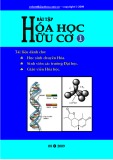




![Bài tập Đa dạng thế giới sống [kèm đáp án/ hướng dẫn giải]](https://cdn.tailieu.vn/images/document/thumbnail/2025/20251123/thaohoang9203@gmail.com/135x160/5861763951302.jpg)
